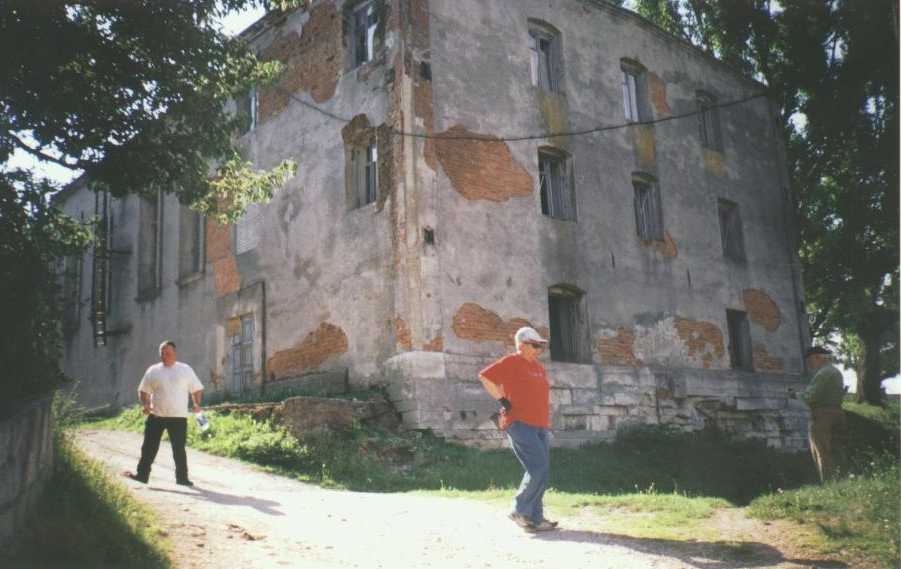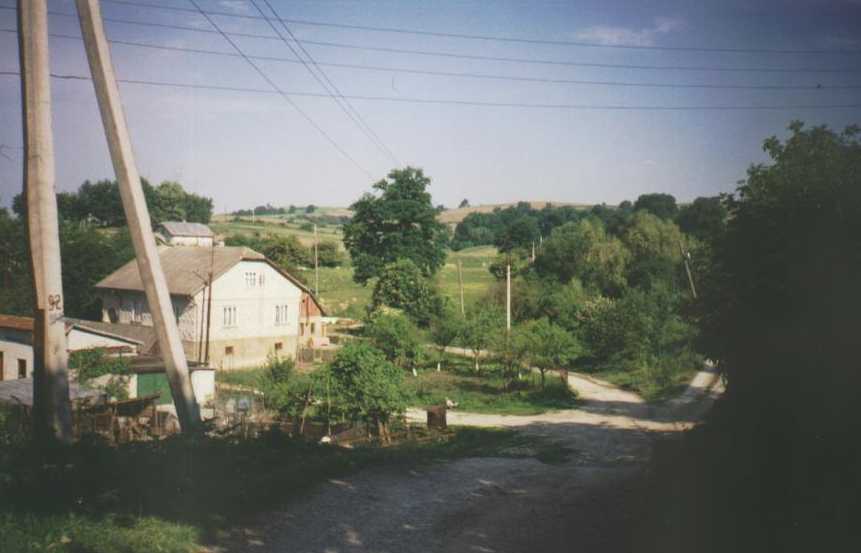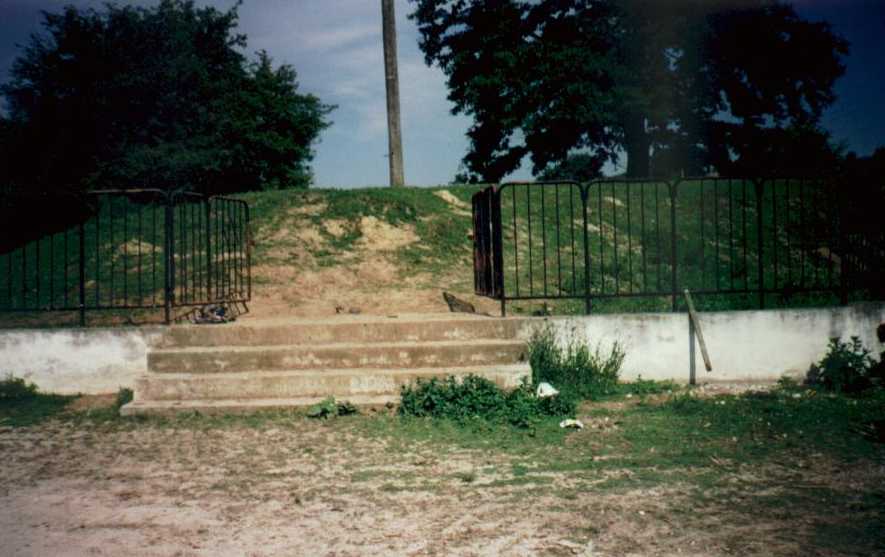|
a better view |

The synagogue today |

The road to the cemetery |

The cemetery gate Click to enter |

The killing ground |
On Thursday 13 Iyyar 5760, 18 May 2000, we visited Rozdol. "We" in this case means Betty Lee Hahn (my new-found third cousin), Ephraim Pickholz and I, together with our guide and translator Alex Dunai of Lviv.
We drove through town (the streets were all paved - at least the ones
we saw) and went directly to the synagogue, which is quite near the cemetery.
The synagogue was locked, but we told that there is nothing inside to attest
to it's original use. (This is the synagogue completed in 1927, not
the old wooden one that appears in the Encyclopedia Judaica and which burned
down in 1907.)
|
a better view |

The synagogue today |

The road to the cemetery |

The cemetery gate Click to enter |

The killing ground |
There are quite a few tombstones, but the vast majority are broken, face down, partially buried and otherwise illegible. But many can be read, at least partially. I did not see a single stone with either a surname or any Latin lettering.
I took forty-six photographs in the cemetery and they will be posted on the Rozdol web site after I get them scanned.
We also saw the place where the Jews were killed, which is just outside the cemetery fence. (Please remember that the murder of the Jews of Rozdol is one of the less well-documented of the Holocaust.)
We drove back into town and spoke with a few older citizens on the street, asking if they knew this person or that, with no noteworthy results.
We paid a visit on the mayor, a woman born after the Holocaust, who
received us graciously in her office despite our being
unannounced and uninvited. her name is Maria Mikolayevna and
she knew very little about the period before and during the War, although
she certainly knew the period in general terms.
Maria phoned an elderly history teacher who lives nearby and asked him
to come to speak to us. The teacher - Roman
Gorbacevski - is seventy-eight and told several stories, both about
the Nazi commander and about some of the victims. I shall not attempt
to recreate them here.
We also learned that according to local lore, one local man took cemetery stones in order to build a basement.. He died suddenly the next day and since then no one touched the stones in the cemetery.
Our particular interest was Pickholz and he knew that there were several Pickholz families, including Avraham, who owned a bank. (His granddaughter lives in Tel-Aviv today and we are in touch with her.)
I asked him if he knew Shemuel Case, who was killed with his wife (a Pickholz) and family and he told us that we were at that moment sitting in Shemuel Case's house. Town Hall. (Both Shemuel Case and his wife have family in Israel and this information has been passed on. Maybe someone can get the town to put a plaque or something.)
I suppose that isn't much of a report, but it reflects the morning we spent in Rozdol.
Israel P.
Back to Rozdol Shtetlinks page
JewishGen Home
page
Copyright ©2000 Israel Pickholtz